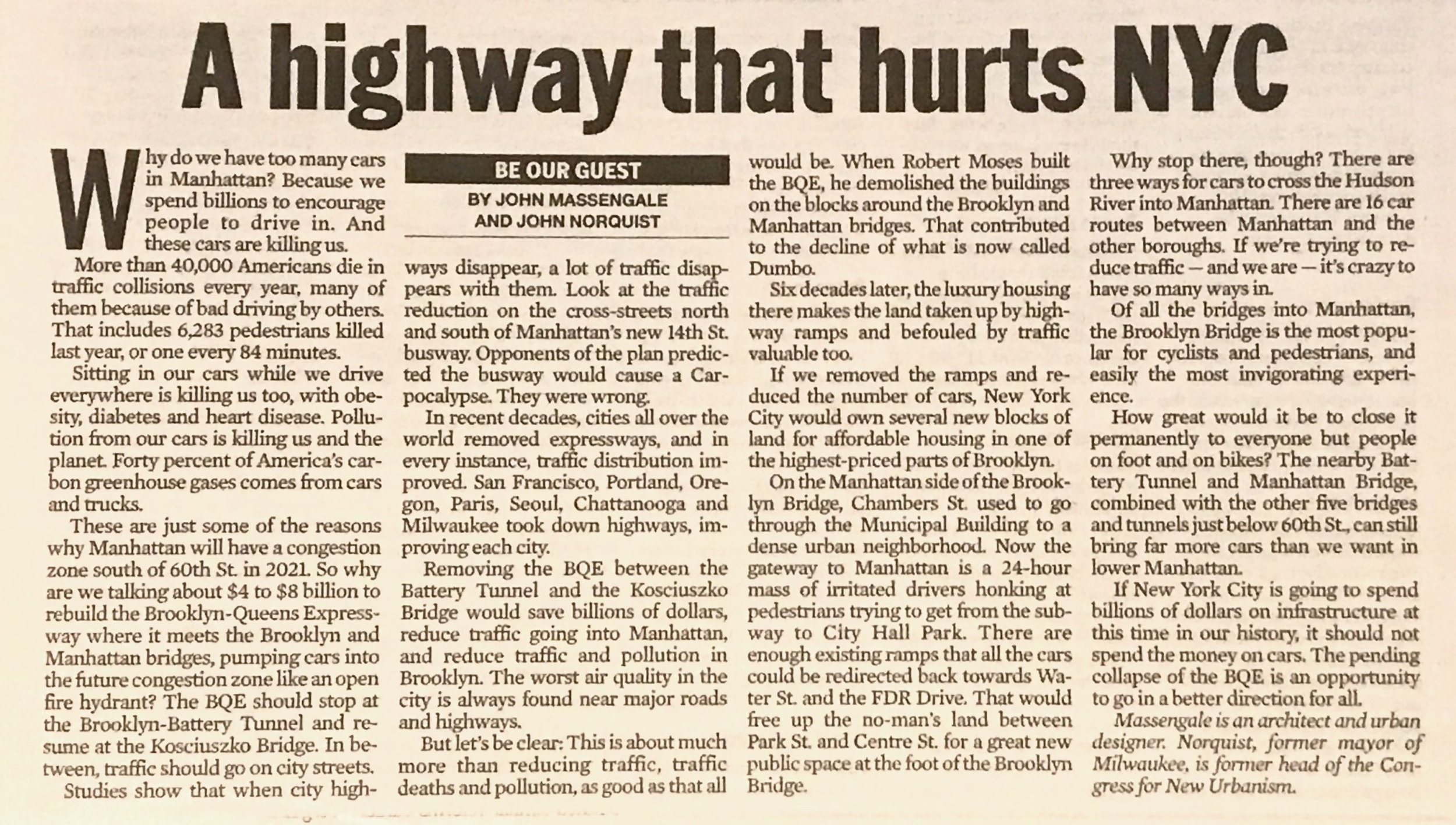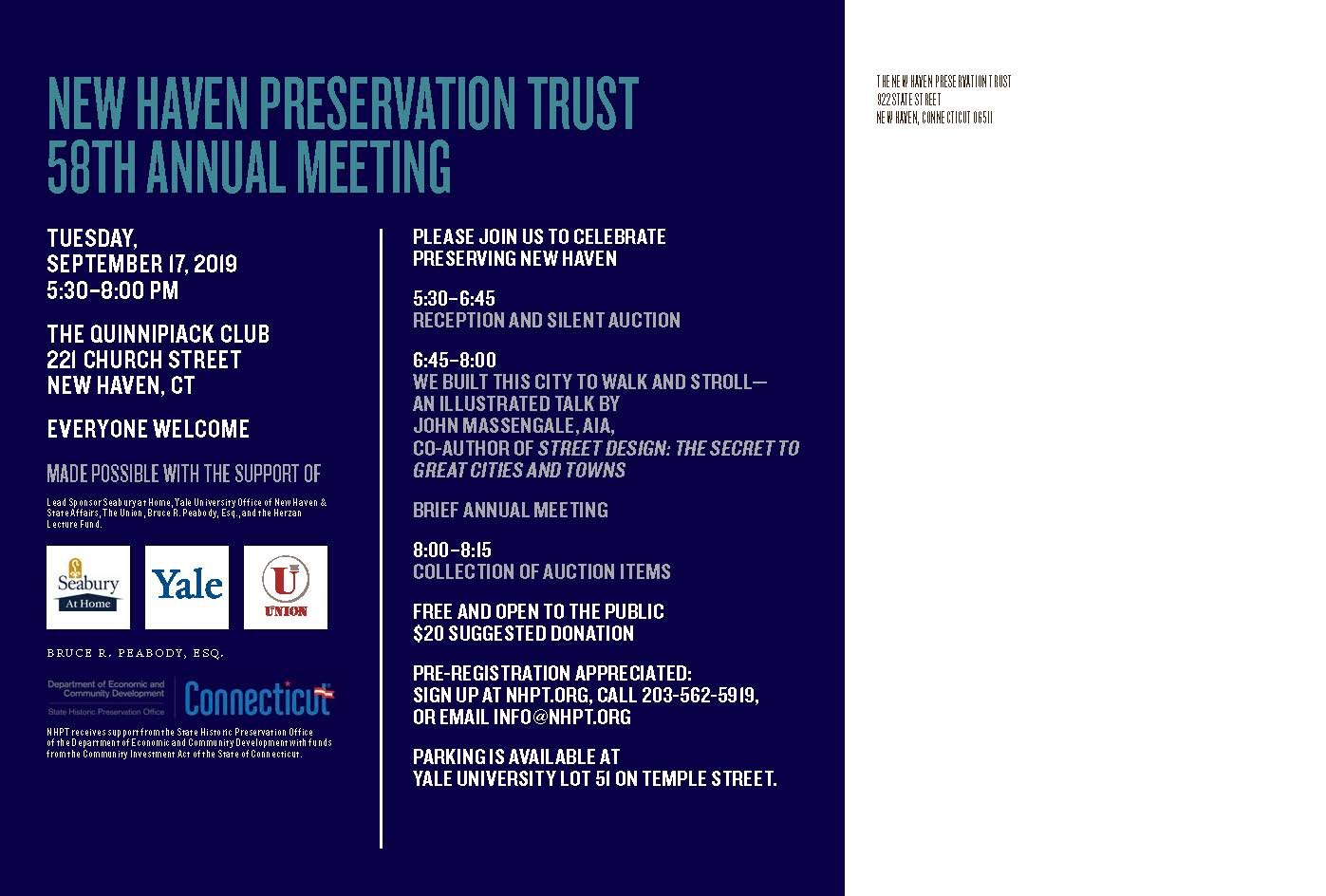DAILY NEWS OP-ED: A HIGHWAY THAT HURTS THE CITY
On November 25, 2019, CNU NYC Chair John Massengale and former Congress for New Urbanism Chair and President John Norquist published an Op-Ed in the New York Daily News. The topic was what to do about the falling-down Brooklyn Queens Expressway and to improve city life in Brooklyn and Manhattan.
The drawing above illustrates this part of the text:
On the Manhattan side of the Brooklyn Bridge, Chambers Street used to go through the Municipal Building to a dense urban neighborhood. Now the gateway to Manhattan is a 24-hour mass of irritated drivers honking at pedestrians trying to get from the subway to City Hall Park. There are enough existing ramps that all the cars could be redirected back towards Water Street and the FDR Drive. That would free up the no-man’s land between Park Street and Centre Street for a great new public space at the foot of the Brooklyn Bridge.
John Norquist has decades of experience with highway tear downs. When he was Mayor of Milwaukee, Norquist was one of the first American mayors to tear down a city highway. As Chair and President of the CNU, he started a program called Highways to Boulevards that has worked with states, cities, and Congress. Their 2019 report Cities Without Futures can be downloaded here.
The online version of the Daily News Op-Ed is here, with the title “Buck the BQE: The city should not replace a key stretch of the cantilevered Brooklyn highway.” Twitter replied, “Don’t need no stinkin’ BQE.”
JOHN MASSENGALE NEW HAVEN PRESERVATION KEYNOTE SEPTEMBER 17
John Massengale AIA CNU speaking in New Haven:
New Haven Preservation Trust Annual Meeting
Tuesday, September 17, 2019, 5:30 – 8 PM
The Quinnipiack Club
221 Church Street
New Haven, CT 06510
NANTUCKET SOS! (SAVE OUR STREETS)
A FRIEND called me today with the sad news that what I once called my favorite street in America is under attack from the island’s own Public Works Department. I don’t know the details, but it’s surprising, because as we wrote in Street Design, Nantucket has a long history of not changing things that work—as their streets do.
Case in point, the beautiful Elm trees on and near Main Street, like the one above.
I gather the problem is handicap access, which is a real problem. But there’s more than one way to do anything, and design is about solving problems with solutions that are both functional and beautiful.
There’s a meeting tomorrow night to discuss the problem. While we wait to hear what that is, here’s a limerick I wrote while visiting Nantucket for Street Design:
There once was a tree on Nantucket,
With none of its roots in a bucket,
“That can’t be,”
Said the state DOT,
But no car has ever yet struck it.
After the jump, another Nantucket Elm
NEW YORK TIMES OP-ED: “THERE ARE BETTER WAYS TO GET AROUND TOWN
New York City Streets for People After the Congestion Zone
Jane Jacobs Square, New York, New York. © Massengale & Co LLC, watercolor by Gabrielle Stroik Johnson. Before & After: Looking south on Bleecker Street from the intersection of Bleecker and West 10th Streets
The debate continues over how to make New York City’s streets less crowded, safer and better for people as well as cars. Some, like Gov. Andrew Cuomo, call for congestion pricing in Manhattan, although so far the New York State Legislature has not allowed that. Mayor Bill de Blasio and groups such as Transportation Alternatives promote Vision Zero, aiming for zero traffic deaths in New York City by 2024.
It’s worth looking at European cities, which have led the movement to make city streets that are as good for public life as they are for driving. In recent months, I’ve visited four of the cities with the most innovative street designs: London, Stockholm, Amsterdam and Copenhagen.








